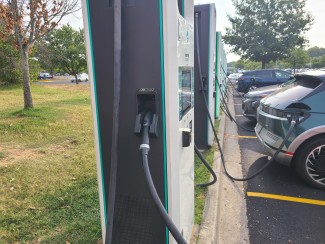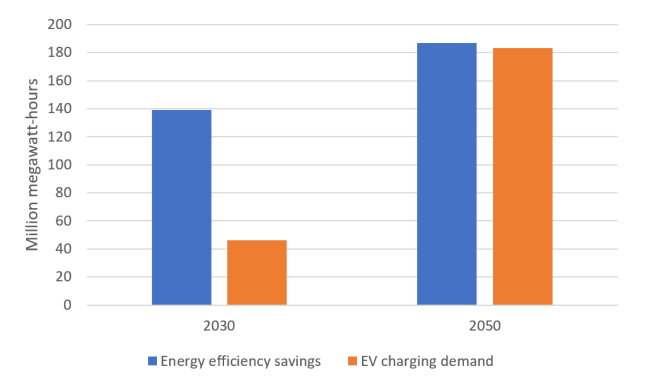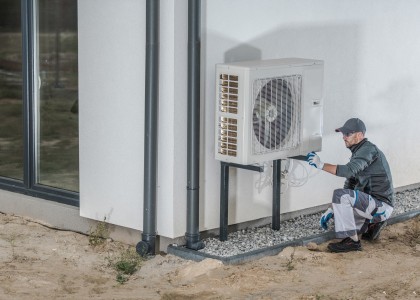With millions of EVs set to hit the road in coming years, improving efficiency in residential and commercial buildings can ease the transition and ensure the grid can handle the increased electric load.
The transition to electric vehicles (EVs) is completely changing the way we fuel our cars, with drivers ditching the gas station for the wall outlet. The Department of Energy's multiyear Electrification Futures Study estimates that widespread electrification could increase electricity consumption by up to 38%, which could require expensive upgrades to electricity transmission and distribution systems over the coming decades. However, we can avoid many of these grid expenses if we make smart investments in energy efficiency instead.
Cars and trucks are responsible for over 23% of all U.S. greenhouse gas emissions. Since EVs can run on a renewable electricity grid and be zero-emission, electrifying all the vehicles on the road will be vital to reducing carbon emissions. The Department of Energy study projects that increased electricity demand by 2050 will be driven mainly by EVs. In California, the state with the largest EV market share today and a state with ambitious EV adoption goals, if all vehicles are electric in 2050, it would increase electric demand by 183 million megawatt-hours, according to Energy Innovation’s Energy Policy Simulator. That’s a significant increase, but not insurmountable if overall electricity demand is reduced through energy efficiency.
The United States has made great strides in reducing energy consumption, halving energy use relative to the size of the economy since 1980, but bigger opportunities are still ahead. Energy efficiency investments will benefit households’ bottom lines and reduce our dependence on fossil fuels. It can also mean an easier and faster transition to EVs because energy efficiency limits the grid upgrades needed to bring the electricity to serve EVs.
California could reduce its electricity usage with investments in commercial and residential building energy efficiency, including better building insulation, more efficient appliances and lighting, and smart thermostats. By one estimate, the state could save 187 million megawatt-hours annually by 2050 with ambitious energy efficiency improvements in these areas. As shown in the chart below, California’s potential energy savings from efficiency is slightly greater than the expected electricity consumption of fully electrified vehicles in the state, with the avoided grid enhancements saving utilities and consumers money. The impact is even more pronounced in the short term: the potential for energy efficiency to reduce electricity consumption is about three times greater than the expected electricity demand from EVs in 2030 in California, at 139 million megawatt-hours in savings compared to 46 million megawatt-hours in EV charging.
Energy efficiency savings potential versus projected EV charging demand in California
In addition to savings in the buildings sector, efficiency savings can be achieved in other sectors of our economy, including industry and transportation. For example, industrial firms can adopt strategic energy management, an approach that commits to continuous efficiency improvement. High-efficiency EVs can be an essential part of these efforts, lowering the electricity needed for charging and making the transition easier while limiting grid strain. The efficiency of today’s EVs varies widely, and there is plenty of room for improvement to reduce the millions of megawatt-hours EVs will need over the coming decades. Greater EV efficiency will also save drivers money, allowing them to go farther with the same amount of electricity, and it can increase an EV’s range and reduce mineral demand for EV batteries.
Utility planning will be necessary to ensure that the grid can deliver the needed electricity and do so when and where it’s needed. The timing of electricity savings and demand will help determine the level of investment required to ensure grid stability. Policies like electricity time of use rates and demand management can help match the supply and demand of electricity as we electrify transportation and other sectors.
The amount of electric power use that can be reduced through efficiency measures is massive. It can significantly reduce the grid upgrades needed to handle full electrification of all the vehicles on the road. Energy efficiency makes transitioning to EVs easier, meaning less climate pollution, cleaner air, and lower utility bills for households and businesses.




